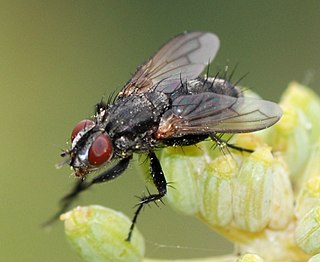
Rhinophorinae is a subfamily of flies (Diptera), commonly known as Woodlouse Flies, found in all zoogeographic regions except Oceania, but mainly in the Palaearctic and Afrotropical regions.

The Chrysomyinae are a subfamily of Calliphoridae, or blow flies. According to Whitworth, the distinguishing characteristic of this subfamily is a setose stem vein.
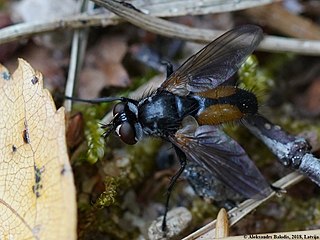
Hemyda is a genus of flies in the family Tachinidae.
Ceracia is a genus of bristle flies in the family Tachinidae.
Chetina is a genus of bristle flies in the family Tachinidae.
Estheria is a genus of flies in the family Tachinidae.
Phonomyia is a genus of flies in the family Tachinidae.
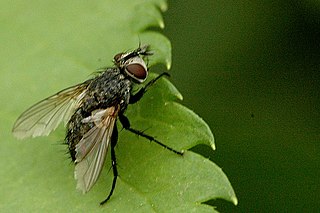
Phryxe is a genus of flies in the family Tachinidae.

Zeuxia is a genus of flies in the family Tachinidae.

Lydella is a genus of flies in the family Tachinidae. Lydella thompsoni can be used in the UK for the biological control of the European corn borer.
Lecanipa is a genus of flies in the family Tachinidae.
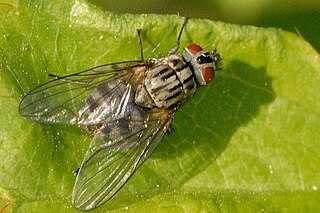
Reinwardtiini is a tribe of flies from the family Muscidae.

Dufouriini is a tribe of flies in the family Tachinidae.
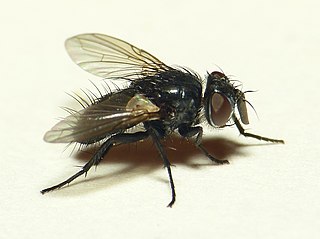
Blondeliini is a tribe of parasitic flies in the family Tachinidae. Larvae are parasitoids of other insects, mostly beetles and caterpillars. Although nearly cosmopolitan, its greatest diversity is in the New World and especially in South America.
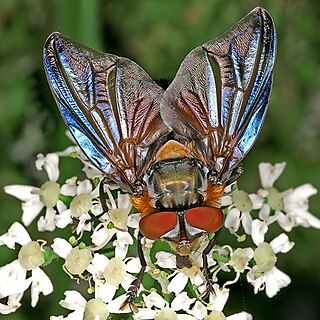
Phasiinae is a subfamily of flies in the family Tachinidae. Except for the small tribe Strongygastrini members of this subfamily attack only Heteroptera.
Acemyini is a small but cosmopolitan tribe of flies in the family Tachinidae. Like all tachinid flies, acemyiines are parasitoids of other invertebrates. Specifically, the acemyiines are parasitoids of Orthoptera in the families Acrididae and Eumastacidae.

Paramacronychiinae is a subfamily of flesh flies.

Polleniidae is a family of flies in the order Diptera. There are at least 6 genera and more than 190 described species placed definitively in Polleniidae, and other genera whose placement here is considered uncertain. The largest genus is Pollenia, with close to 190 species of flies commonly called "cluster flies".

Rhiniidae is a family of flies in the order Diptera, and formerly included in the Calliphoridae. There are around 30 genera and 370 described species in Rhiniidae.

Rhinophorini is a tribe of flies (Diptera), known as woodlouse flies













